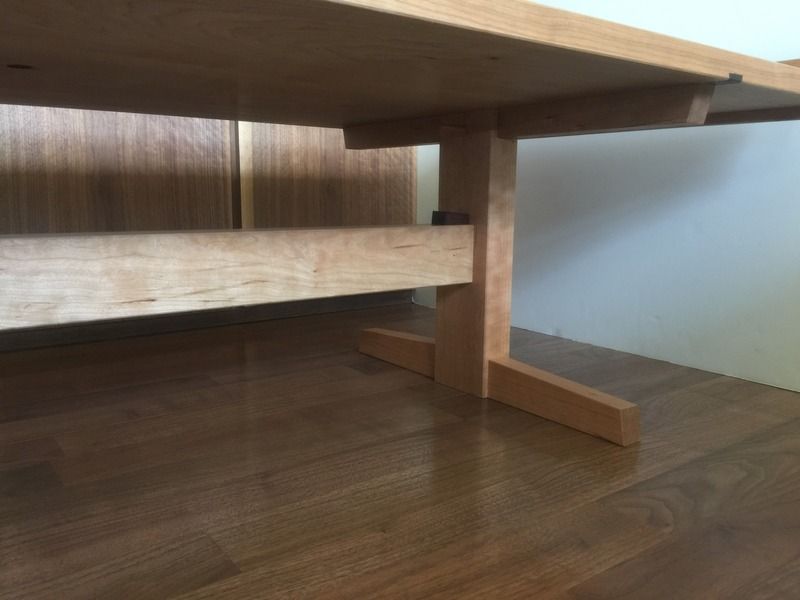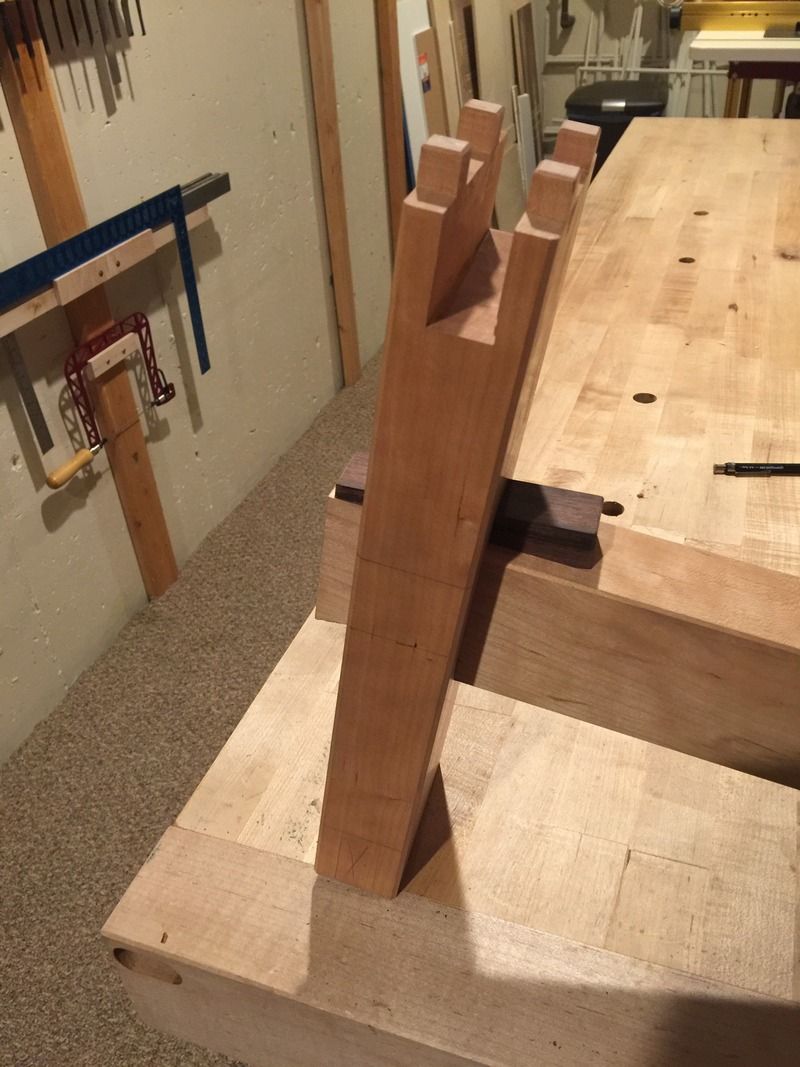Prashun,
James is accurate, judging from his comments I expected he was leaning toward the cantilevered design.
This is how I've built a similar configuration to what Prashun mentions;

Not visible here, but important to the design are four stub tenons which integrate themselves into the top and use it to counter forces which would cause the bridle joint to splay.
If this were a desk I would make the battens taller to give them additional leverage over the forces that will be applied to them in use.

Bumbling forward into the unknown.




 Reply With Quote
Reply With Quote



 ) James' application is more static, although Brian's advice about how guests behave is well taken.
) James' application is more static, although Brian's advice about how guests behave is well taken.
